On April 16…
History is the torch that is meant to illuminate the past, to guard us against the repetition of our mistakes of other days. We cannot join in the rewriting of history to make it conform to our comfort and convenience.
~ Claude G. Bowers
1789– Newly elected President George Washington left his Mount Vernon, Virginia, home and headed for New York City’s Federal Hall (site of the first U.S. Capitol), where two weeks later, he was sworn in as the first American president.
Before leaving, Washington addressed a group of citizens in nearby Alexandria, Virginia, to whom he expressed his inner conflict at assuming the role of president. He admitted that he would have preferred to stay in retirement and wondered aloud, “at my age what possible advantages could I gain from public life?”
However, disturbed by growing antagonism between the fledgling nation’s political factions, Washington felt duty-bound to help resolve what he feared was an impending crisis. He recounted the day in his diary: “I bade adieu to Mount Vernon, to private life, and to domestic felicity; and with a mind oppressed with more anxious and painful sensations than I have words to express.”
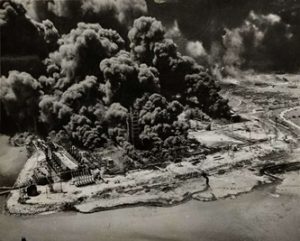
1947– A giant explosion occurred during the loading of ammonium nitrate as well as tobacco and government-owned ammunition onto the freighter Grandcamp at a pier in Texas City, Texas. Nearly 600 people lost their lives and thousands were injured when the ship was literally blown to bits.
Water and an extinguisher were used to fight the fire, but hoses were not employed for fear of ruining the cargo; there were already 2,200 tons loaded on the ship. While the ammunition was removed from the ship, the crew attempted to restrict oxygen to the hold in hopes of putting out the fire. Unfortunately they did not realize that because of ammonium nitrate’s chemical composition, it does not require oxygen in order to burn.
By 9 a.m., flames had erupted from the hold and within minutes it exploded. The blast was heard 150 miles away and was so powerful that the ship’s 1.5- ton anchor was found two miles away. The force of the explosion lifted another ship completely out of the water. People working at the docks were killed instantly.
Pieces of flaming debris damaged the oil refineries in the area. A nearby Monsanto chemical storage facility also exploded, killing 234 of the 574 workers there. Nearly all of the survivors were seriously injured. A residential area of 500 homes was also leveled by the blast.
Another ship, the High Flyer, which was carrying similar cargo, was pushed completely across the harbor. The crew fled when it came to rest, failing to notice that a fire had started and the next day their ship also exploded.
581 people died and over 5,000 were injured. The explosion caused $100 million ($1.1 billion in today’s terms) in damages.
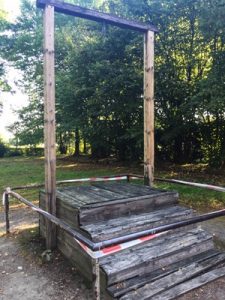
1947– Rudolf Höss, the longest-serving (3 ½ years) commandant of Auschwitz concentration and extermination camp, was executed by hanging. The sentence was carried out next to the crematorium of the former Auschwitz I concentration camp.
During his trial, when accused of murdering three and a half million people, Höss had arrogantly replied, “No. Only two and one half million – the rest died from disease and starvation.”
The gallows, shown above, were specifically built for the Höss execution and were never used again. They stand today as a reminder of the horror that took place at Auschwitz.
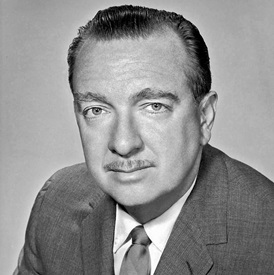
1962– Walter Cronkite succeeded Douglas Edwards as anchorman of the CBS News nightly broadcast. He remained in that position until March 6, 1981.
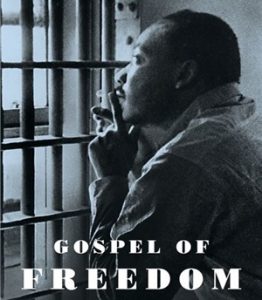
1963– The Letter from Birmingham Jail (also known as the Letter from Birmingham City Jail and The Negro Is Your Brother) was an open letter written by Martin Luther King Jr as he sat in a cell at Birmingham, Alabama for violating an injunction that outlawed “parading, demonstrating, boycotting, trespassing and picketing.”
The letter defended the strategy of nonviolent resistance to racism. It says that people have a moral responsibility to break unjust laws and to take direct action rather than waiting potentially forever for justice to come through the courts. Responding to being referred to as an “outsider,” King wrote, “Injustice anywhere is a threat to justice everywhere”.
The letter was widely published, and became an important text for the American Civil Rights Movement.

1972– In an effort to help blunt the ongoing North Vietnamese Nguyen Hue Offensive, the United States resumed the bombing of Hanoi and Haiphong after a four-year lull.
In the first use of B-52s against both Hanoi and Haiphong, and the first attacks against both cities since November 1968, 18 B-52s and about 100 U.S. Navy and Air Force fighter-bombers struck supply dumps near Haiphong’s harbor.
Sixty fighter-bombers hit petroleum storage facilities near Hanoi, with another wave of planes striking later in the afternoon. White House spokesmen announced that the United States would bomb military targets anywhere in Vietnam in order to help the South Vietnamese defend against the communist onslaught.
Actress Jane Fonda became infamous for travelling to North Vietnam three months later to protest the bombing renewal. She was pictured sitting on a North Vietnamese anti-aircraft battery, wearing a helmet (an image that still enrages veterans), and more than anything else, earned her the nickname “Hanoi Jane”.
North Vietnamese press reported — and Fonda later confirmed — that she made several radio announcements over the Voice of Vietnam radio to implore U.S. pilots to stop the bombings. She has apologized many times for the antiaircraft gun photo. But she maintains she was not a traitor by speaking out against the war or trying to turn soldiers against it, because she still believes the U.S. government was lying to them.

1992– The House ethics committee dropped a political depth charge when it released the names of 303 current and former lawmakers who overdrew their accounts at the now-closed House of Representatives Bank. In less than four years, House members wrote nearly 20,000 bad checks totaling almost $11 million. The scandal contributed to a perception of corruption and malfeasance and was a contributing factor to major changes in the House, in which 77 Representatives resigned or were ousted in the 1994 election.
Three ex-Congressmen and the former House Sergeant at Arms were convicted of wrongdoing as a result of the investigation that followed. Former Rep. Buz Lukens (R-OH) was convicted on bribery and conspiracy charges. Former Rep. Carl C. Perkins (D-KY) pleaded guilty to various charges including a check kiting scheme involving several financial institutions including the House Bank. Former Rep. Carroll Hubbard (D-KY) pleaded guilty to three felonies. The former Sergeant at Arms, Jack Russ, pleaded guilty to three felonies.
In the early days of the scandal, when the media began reporting on the loose practices, Republican Minority Whip Newt Gingrich, along with 7 freshman Republicans (referred to as the Gang of Seven), made the strategic decision to publicize the scandal in an attempt to sweep congressmen with overdrawn accounts, most of them Democrats, out of power. The problem with that strategy was Gingrich himself had 22 overdrawn checks, including a $9,463 check to the Internal Revenue Service.
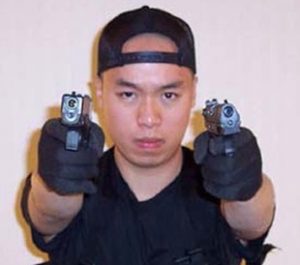
2007– In one of the deadliest mass shootings in U.S. history, 32 people died after being gunned down on the campus of Virginia Tech by Seung Hui Cho, a student at the college who later committed suicide.
The shooting began around 7:15 a.m., when Cho, a 23-year-old senior and English major, shot a female freshman and a male resident assistant in a campus dormitory before fleeing the building. Police were soon on the scene; unaware of the gunman’s identity, they initially pursued the female victim’s boyfriend as a suspect in what they believed to be an isolated domestic-violence incident.
However, at around 9:40 a.m., Cho, armed with a 9-millimeter handgun, a 22-caliber handgun and hundreds of rounds of ammunition, entered a classroom building, chained and locked several main doors and went from room to room shooting people. Approximately 10 minutes after the rampage began, he died from a self-inflicted gunshot wound.
Compiled by Ray Lemire ©2018 RayLemire.com. All Rights Reserved.
